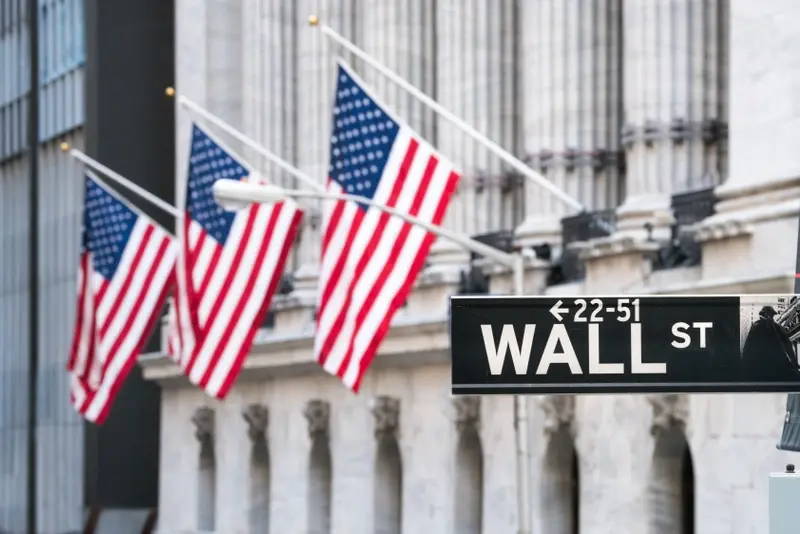
After a post-election lull, US stock markets got back to winning ways this week with broad gains, led by the small cap Russell 2000 index and the technology heavy Nasdaq leading the charge.
Weekly jobless claims fell 6,000 to a seasonally adjusted 213,000, a new six-month low, suggesting a bounce in jobs growth in November from a hurricane and strike impacted October.
US existing home sales also rebounded in October with a 3.4% jump to register their first growth since mid-2021. Meanwhile the Conference Board Leading Economic dropped 0.4% in October driven by weak manufacturing new orders.
Bond markets were steady over the week with the 10-year treasury yield at 4.3% but inflation worries, and a resilient economy saw mortgage rates drifted up to 6.84%, the highest since July.
The biggest gainer in the S&P 500 index was computer servers maker Super Micro Computer (SMCI:NASDAQ) which soared 64% after it named BDO USA as its auditor and said it had submitted a plan to Nasdaq seeking more time to comply with listing rules.
At the other end of the spectrum big-box retailer Target (TGT:NYSE) slumped 20% after missing earnings estimates and cutting its outlook.
WALMART / TARGET
Walmart (WMT:NYSE) continues to trounce Target in the battle of America’s big-box retailers.
Shares in the former gained 4.3% to $88.2 this week, an all-time high, after the groceries goliath delivered (19 November) forecast-thumping third quarter results and hiked its full year 2025 outlook yet again.
Revenues at the world’s biggest retailer rose 5.5% year-on-year to $169.6 billion in the quarter with US same-store sales up 5.3% as Walmart’s keen prices lured in cash-strapped and more affluent shoppers alike.
The Bentonville-based behemoth called out positive growth in discretionary merchandise and wowed Wall Street with near-30% growth in its advertising business. In contrast, the latter’s stock plunged 20% to a 52-week low of $123 after Target’s third quarter earnings (20 November) missed estimates and the discounter cut full year guidance ahead of the Christmas season, while bemoaning a deceleration in discretionary demand.
Losing market share to Walmart as well as Costco (COST:NASDAQ) and Amazon (AMZN:NASDAQ), Target eked out a 0.3% rise in same-store sales for the quarter, but disappointed with guidance for flat fourth quarter comparable sales.
CEO Brian Cornell said Target saw ‘several strengths across the business, including a 2.4% increase in traffic, nearly 11% growth in the digital channel, and continued growth in beauty and frequency categories’, but at the same time, ‘we encountered some unique challenges and cost pressures that impacted our bottom-line performance.’
DEERE & CO
Demand for its agricultural equipment may be uneven but falling production costs helped Deere & Co (DE:NYSE) handily beat fourth-quarter expectations. Earnings per share of $4.55 for the three-month period ended 27 October were substantially of the $3.87 which had been slated in.
However, less positively, the company now expects 2025 profit to be between $5 billion and $5.5 billion, compared with a consensus estimate of $5.93 billion.
Net sales are seen falling in the range of about 10% to 15% across all machinery segments after a period when supply chain concerns and surging appetite for farm machinery supported sales, lower farm income and higher for longer interest rates have subsequently dampened demand.
The company looks to have remained disciplined on price and is cutting its cloth to fit the current environment. There also seemed to be a sense that it was being fairly conservative with its guidance for the current year.
NVIDIA
Investors have become a bit like spoiled children when it comes to Nvidia (NVDA:NASDAQ), getting all they could hope for, yet still wanting more.
This week, it posted a 94% increase in revenue from a year ago, quite a bit better than it had projected, and the stock falls, albeit barely.
At 146.67, the stock is just 1.5% off their all-time high. Just take a look at the chip designer’s Data Center segment. It saw revenue surge by 112% year-on-year to a record $30.8 billion, exceeding estimates of $29.14 billion, with growth driven by robust demand for Hopper H100 architecture and early anticipation for the next-generation Blackwell platform, which the company expects to ship in Q4 of fiscal 2025.
If you consider that the Data Center business produced $4 billion of sales just seven quarters ago, you get a sense of how much Nvidia’s business has mushroomed in size in less than two years.
‘The reason Nvidia’s trajectory will continue can be summarised in two words: pricing power’, said Beth Kindig, lead tech analyst at the IO Fund.
‘By coming to market with upgraded, more powerful GPUs on a now-annual cadence, with Blackwell Ultra, Rubin and Rubin Ultra soon to come, Nvidia will continue to be the largest beneficiary of Big Tech’s AI capex to an unprecedented degree as the company continually raises the bar on performance and total cost of ownership upgrades with each new generation.’Expect analyst upgrades to flood in over the coming days.




